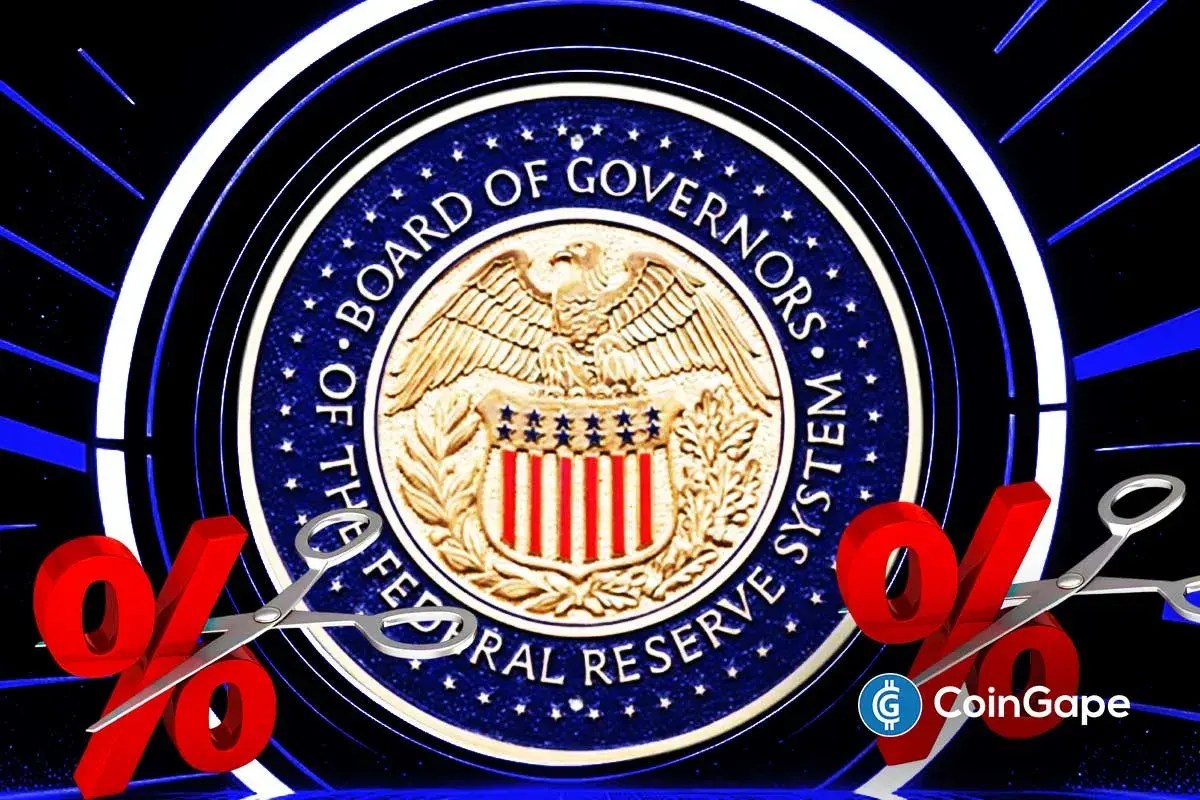Stablecoins Unveiled: JPMorgan CEO’s Decisive Stance on Bank Deposits
BitcoinWorld
Stablecoins Unveiled: JPMorgan CEO’s Decisive Stance on Bank Deposits
The world of finance is constantly evolving, and the rise of digital assets has sparked numerous debates. Recently, a significant voice from traditional banking weighed in on one of these crucial discussions. JPMorgan Chase CEO Jamie Dimon has offered a clarifying perspective on stablecoins, stating unequivocally that these digital assets do not pose a threat to conventional bank deposits. This insight offers a fascinating glimpse into how established financial institutions are viewing the burgeoning crypto landscape.
JPMorgan’s View: Why Stablecoins Aren’t a Threat
Jamie Dimon’s comments, shared in a recent interview, highlight a nuanced understanding of the digital asset space. He emphasized that while he isn’t concerned about stablecoins displacing traditional deposits, the banking sector must proactively engage with them. This preparation is crucial for understanding their commercialization and potential integration into broader financial systems.
A key reason for this perspective stems from the observed demand for U.S. dollars held in the form of stablecoins, particularly overseas. This demand isn’t about replacing bank accounts but rather providing an efficient, digital means to access and transact with the world’s primary reserve currency. It’s a testament to the utility stablecoins offer in certain international contexts.
JPMorgan itself is not a bystander in this evolution. The financial giant is already involved in businesses related to these digital assets and is actively considering forming a consortium. This strategic move suggests a recognition of stablecoins as a tool for innovation rather than an existential competitor to their core banking services. Furthermore, it demonstrates a forward-thinking approach to leveraging new technologies within a regulated framework.
Understanding the Appeal of Stablecoins Globally
So, what exactly makes stablecoins so attractive, especially in international markets? Essentially, stablecoins are cryptocurrencies designed to minimize price volatility. They achieve this by pegging their value to a stable asset, most commonly the U.S. dollar. This stability is a significant draw, differentiating them from more volatile cryptocurrencies like Bitcoin or Ethereum.
For individuals and businesses operating across borders, stablecoins offer several compelling advantages:
- Enhanced Access to USD: They provide a digital pathway to hold and transfer U.S. dollars without necessarily needing a traditional bank account in certain jurisdictions, particularly in regions with limited banking infrastructure or capital controls.
- Faster Transactions: Transfers can often be significantly quicker and more efficient than traditional wire transfers, especially when sending money internationally across different time zones and banking systems.
- Potentially Lower Fees: Depending on the blockchain network and specific stablecoin, transaction costs can be considerably lower compared to conventional international remittance services.
- Increased Transparency: As transactions are typically recorded on a public blockchain, they offer a level of transparency and auditability that can be beneficial for compliance and record-keeping.
This utility is what Dimon likely refers to when he speaks of overseas demand. It’s about practical application and fulfilling a specific market need, rather than directly competing with the fundamental role of a bank in safeguarding customer deposits and providing credit.
Navigating the Future: Banking and Digital Assets
The banking industry’s proactive approach to understanding and preparing for the commercialization of stablecoins is a positive sign. It indicates a willingness to adapt and potentially integrate new technologies rather than resist them outright. This shift could lead to exciting new financial products and services that bridge the gap between traditional finance and the decentralized world, creating a more interconnected global financial ecosystem.
However, the journey isn’t without its complexities. Regulatory frameworks for stablecoins are still evolving globally, and ensuring consumer protection, financial stability, and robust anti-money laundering (AML) and know-your-customer (KYC) compliance remains paramount. Governments and central banks worldwide are grappling with how to classify and supervise these digital assets, creating a dynamic and sometimes uncertain environment.
As such, the formation of consortia, as JPMorgan is exploring, could be a strategic way for established financial players to collectively navigate these regulatory challenges. By collaborating, they can help shape industry best practices, advocate for clear regulatory guidelines, and ensure the responsible development and deployment of stablecoins within the broader financial system. This collaborative effort is vital for mainstream adoption and mitigating potential risks.
Dimon also briefly touched upon broader economic conditions, noting that further interest rate cuts by the U.S. Federal Reserve could prove difficult. This is largely due to persistent inflation concerns, which continue to influence monetary policy decisions and the overall economic outlook. While separate from the stablecoins discussion, it underscores the complex financial environment in which these digital asset conversations are taking place, adding another layer of consideration for market participants.
The Evolving Landscape of Digital Currency and Banking
Jamie Dimon’s statement provides a crucial perspective: stablecoins, rather than being a direct threat, are emerging as a distinct financial tool with specific use cases, particularly for international dollar-denominated transactions. His pragmatic view, coupled with JPMorgan’s active exploration in the space, suggests a future where traditional finance and innovative digital assets can coexist and even complement each other.
The ongoing dialogue between banking leaders and the crypto community is essential for fostering innovation responsibly. As the demand for digital dollars continues to grow, particularly across borders, understanding and integrating stablecoins into the global financial fabric will be key to unlocking new efficiencies and opportunities for everyone. This collaborative spirit will ultimately define the next era of global finance.
Frequently Asked Questions (FAQs) About Stablecoins and Banking
Q1: What exactly are stablecoins?
A: Stablecoins are a type of cryptocurrency designed to maintain a stable value, typically by pegging their price to a reserve asset like the U.S. dollar or gold. This minimizes volatility, making them suitable for transactions and as a store of value.
Q2: Why does JPMorgan CEO Jamie Dimon not view stablecoins as a threat to bank deposits?
A: Dimon believes stablecoins serve different purposes, particularly fulfilling overseas demand for holding U.S. dollars digitally. He sees them as a tool for efficiency and innovation in specific international contexts rather than a direct competitor to traditional bank deposits.
Q3: What is the primary use case for stablecoins highlighted by Dimon?
A: The primary use case mentioned is the overseas demand for holding U.S. dollars in a digital form. This facilitates faster, potentially cheaper international transactions and provides access to USD without requiring a traditional U.S. bank account.
Q4: Is JPMorgan actively involved with stablecoins or related businesses?
A: Yes, JPMorgan is involved in businesses related to stablecoins and is actively considering forming a consortium. This indicates their strategic interest in understanding and integrating these digital assets into their operations.
Q5: What challenges do stablecoins currently face in the broader financial system?
A: Stablecoins face evolving regulatory frameworks globally, requiring clear guidelines for consumer protection, financial stability, and robust anti-money laundering (AML) and know-your-customer (KYC) compliance. These regulatory uncertainties are a key area of focus for the industry.
If you found this article insightful, consider sharing it with your network! Your thoughts and discussions help foster a better understanding of the evolving financial landscape. Join the conversation on social media and spread the word about the future of banking and digital assets.
To learn more about the latest crypto market trends, explore our article on key developments shaping stablecoins institutional adoption.
This post Stablecoins Unveiled: JPMorgan CEO’s Decisive Stance on Bank Deposits first appeared on BitcoinWorld.
Vous aimerez peut-être aussi

Trump and WLFI Debate Escalates! US Democrats Make New Move to Anger Trump!

What Are the Biggest Bear Scenarios for the Bitcoin (BTC) Price? Experts Listed Them
